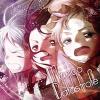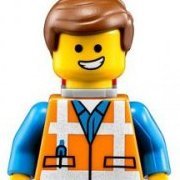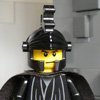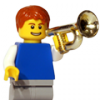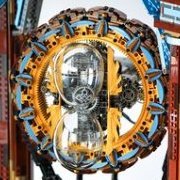Search the Community
Showing results for tags 'Power functions'.
Found 368 results
-
Greetings, Train Tech! Here's a model of the BR24 steam locomotive from Germany, built at my usual 15 inches / stud scale: The BR24 (or "DRG Class 24") were a standard class of German locomotives built in the 1920s and 1930s. As was the case with most standard German designs, plans were drawn up and orders were placed from various manufacturers. They served through World War 2, and continued to serve into the 70s in West Germany, East Germany, and in Poland (as the Oi2 class) Most photos of the locomotives show them fitted with the larger Wagner smoke deflectors (the "elephant ears") -- I've chosen to model the locomotive with the smaller Witte deflectors, which were fitted on a few examples later in their life. I was motivated to build this locomotive for two reasons. First, I wanted a suitable locomotive to go with the Umbauwagen I had built. Secondly, I hadn't seen many new takes on this model since Ben Beneke's version from the early 2000s! There are many builders who have modified Ben's design, often substituting BBB medium wheels for the rare large wheels from the set 7750. However, my typical scale is larger than the scale of Ben's model, and I also wanted to leverage some new parts that have come out since. Like most of my locomotives, this model features Power Functions. A single M-motor beneath the cab powers the drivers at a 5:3 reduction ratio. The locomotive is fairly light but pulls adequately, and there's room in the boiler for additional weight if needed. In a way, this model helps to understand and demonstrate how little weight and torque you can get away with; I see a lot of builders cram extra motors into their locomotive, when the torque can't be transmitted due to a lack of weight. The tender houses the Power Functions receiver and battery box. The 3-axle tender has a rigid frame, with the center axle sliding to negotiate curves (I used a similar geometry on the TP56 locomotive). The body of the tender lifts off for access. The battery box is mounted sideways to better take advantage of the shape of the tender. Coupled together, the locomotive has decent reception from all angles except the front, where the cab blocks the receiver. Incidentally, my model of the 2MT, which exhibited similar reception characteristics, happened to fall off the table during prototyping of this model. About 60% of the 2MT's parts wound up in the BR24, which is actually a pretty good recycling rate! I took the model to Bricks By The Bay 2017, where it spent many hours pulling the Umbauwagen around BayLUG's display. It also won "Best Machine" in the "Scale Models" category: Thanks to anyone who came by to see it, and the rest of the display! Here's the full Brickshelf gallery, along with some Work-In-Progress pictures. I've also brought you some footage of the locomotive in action: Thank you for reading! EDIT: I finally made instructions! https://rebrickable.com/mocs/MOC-106527/NonsenseWars/148-br24-drg-class-24-power-functions-powered-up/ ---------------------------------------------------------------------------------------------------------------------------------------------------------------------------- One final note: Ben was one of the builders who had been active around the time I first started buidling Lego train MOCs -- so in a way, this model is an homage to him. A few of the design techniques used in this model are based on techniques in his models -- the hinges angling the sides of the cab, the 11-plate-diameter boiler, and the way the smoke deflectors are attached. If you're still out there in the hobby, Ben, thank you for inspiring me and a whole generation of builders.
- 20 replies
-
- interiors are overrated
- moc
- (and 6 more)
-
.thumb.gif.ad7c8d88b264ee812194946c07404504.gif)
[MOC] 2WD Drift Racer Chassis
mocbuild101 posted a topic in LEGO Technic, Mindstorms, Model Team and Scale Modeling
This was originally designed to be the smallest RC car to use a buggy motor, but it soon became an extremely powerful car capable of drifting. I refined the chassis design over 2 prototypes, and then tried multiple combinations of gear ratios and different sizes of wheels to achieve the best speed. The result: this MOC you are looking at right now! Driven by buggy motor, geared 1:1.25 Steered by PF servo Hidden power switch on underside LDcad/POV-Ray animation Video: http://bricksafe.com/files/mocbuild101/drift-racer-chassis/video.mpg Instructions: http://www.rebrickable.com/mocs/MOC-8835/mocbuild101/2wd-drift-racer-chassis 3D File http://www.bricksafe.com/files/mocbuild101/drift-racer-chassis/2WD Drift Racer 3D file.mpd- 30 replies
-
- instructions
- video
-
(and 6 more)
Tagged with:
-
For the last 5+ years I have been running a train under my Christmas tree, powered by a LiIon PF battery box and double motors. I recently answered a question on Bricks.stackexchange.com where someone asked for advice on which power system to buy, and the answer I had to give surprised me so much, that I went ahead and changed my own strategy immediately as well. I am now the proud owner of an oval (16+ curves, 12 straights) with a L+R set of points of 9V track, including transformer, wall wart and power-to-rail connectors. Total cost were around $120, however, this is after deducting the going BL price for other train components that came with my purchase. If I didn't exclude those, my total would have been $190. (All US dollars). This prompted me to do a quick compare on the costs of a fully working train oval for under a Christmas tree. The Oval consists of 16 curves and at least 8 straights. The cost of whatever Christmas train you choose to run is not included: Powered UP: Battery Box: $50 at LEGO S@H, $35+shipping at BrickLink (only 1 US Seller) Motor: $14 at LEGO S@H Wheels & Axles: ~$3+shipping on BrickLink for 2 axles and 4 wheels Decorative sides: ~$2.50+shipping on BrickLink Tracks: 1 Track Pack (8 straights, 4 curves): $20 at LEGO S@H, $16 on sale occasionally at other stores; 12x Curved tracks: $6+shipping at BL or: Buy set 60197 ($160 at LEGO S@H, occasionally on sale for less at other stores (e.g. currently $128 at Target) plus 4x Straight track ($7+Shipping on BL) - used ones run about the same cost as the promo prices. Depending on how you count, this is $100-$160+tax for this setup, and you need to keep a mobile phone around (or pony up another $15 for the remote control), have to keep the connection alive, and will have to replace/recharge batteries every 2-3hrs. Power Functions: Battery Box: $13 on LEGO S@H ($15+shipping on BL), or the LiIon pack which has no US-based sellers currently neither on EBay nor BL, but should go for $100-$150 if available. IR Receiver: $10+shipping for a used one on BrickLink Decorative sides: ~$2.50+shipping on BrickLink Tracks: 1 Track Pack (8 straights, 4 curves): $20 at LEGO S@H, $16 on sale occasionally at other stores; 12x Curved tracks: $6+shipping at BL or: Buy a retired Power Function set (used) such as 60051, which with patience can be bought used, complete on EBay for $125-$150. You'd need extra straight track though (see Powered Up), which runs ~$7+Shipping. Again, depending on how you count, this is a $70-$150 purchase. Likely the cheapest option currently, until prices for Power Functions start skyrocketing once all components have officially retired. You get 2-3hrs run time, and unless you add $100 to your total for a LiIon battery box, you will need to buy rechargeable batteries and a charger (or cycle through alkaline AAA's like a madman). 9V: Get a used but working copy of 4561 ($100-$150 on EBay) Buy some extra straight track: 4*$5+shipping on BL (let's call it $25) Total: $125-$175 Suddenly the convenience of never having to change batteries or recharge with a $150 9V purchase sounds pretty attractive, doesn't it? Quite fascinating, for a product that has been discontinued for almost 15 years.
- 21 replies
-
- 9v
- powered up
-
(and 1 more)
Tagged with:
-
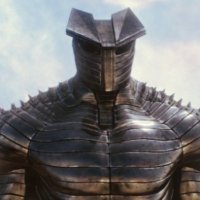
[MOC] Chevrolet K10 Silverado 1985 Update
Michael217 posted a topic in LEGO Technic, Mindstorms, Model Team and Scale Modeling
Welcome to my garage LEGO!!! Hello! My name is Michael. I'm a Builder from Russia, I love muscle cars! Chevrolet K10 Silverado 1985 Description: - 2 L motor for drive - Servo motor for steering and steering wheel - 1 Small power supply ( Hot swap ) - Counterfeit engine under the hood (connected to motors) - Detailed interior - Doors, hood and trunk open - Swap body -4x4 Instagram: https://www.instagram.com/lego_muscle_garage/ Join my group in VK: https://vk.com/legomusclegarage All photos on the link: https://bricksafe.com/pages/Michael217/chevrolet-k10-silverado-1985-update Trailer: - Platform lift - Working ramps - Retractable front wheel -
.thumb.jpg.c73e512ce1ed75fb1580e192a3e8b48a.jpg)
NASA's 6x6 rover mobility system
jam8280 posted a topic in LEGO Technic, Mindstorms, Model Team and Scale Modeling
Robust working 1:12 RC model of the 6x6 rocker-bogie mobility system used in Mars rovers Perseverance and Curiosity... Tons of play value. Works well over most neighborhood surfaces and terrains, but sometimes gets stuck in loose sand. What you put on top is up to you. NB: The NASA rovers are 6x6x4 platforms, with 6 wheels, all 6 driven, and the 4 corner wheels steered. At 1:12 scale, steering individual wheels with LEGO motors is out of the question. So this model is necessarily a 6x6x0 platform — but one with reasonably effective skid steering. Several years ago, made a pretty faithful working 1:12 model of Curiosity with more emphasis on visual realism than on mobility system performance. The current model vastly outperforms the old one... Purist alert: SBrick RC receiver, non-LEGO elastics used to suppress wheel spread.- 15 replies
-
- sbrick
- power functions
-
(and 5 more)
Tagged with:
-
Hi, I'm not sci-fi guy but I made a moc for our local lug's project. I hope you like it.
-

Harry Potter Hogwarts Express Locomotive and Carriage MOC by dunkandeggbricks
dunkandegg posted a topic in LEGO Train Tech
Hello everyone!! I hope I'm right in making this a new topic - and that it should be in train tech and not in licensed. I've been working for a while on my own Hogwarts Express MOC. I know I'm not the first person to do this and I bow before many people who've done superb jobs - but here's my take on it! I've linked the two YouTube videos I've made about the locomotive and the carriage so feel free to have a watch. Or if not, there are a few photos which show what I've made. I'm very happy to answer any questions, as well as pointing people in the direction of my inspirations if they're looking for some themselves. Lego Hogwarts Express Moc by Will Norris, on Flickr Lego Hogwarts Express Moc by Will Norris, on Flickr Lego Hogwarts Express Moc by Will Norris, on Flickr Lego Hogwarts Express Moc by Will Norris, on Flickr Lego Hogwarts Express Moc by Will Norris, on Flickr Lego Hogwarts Express Moc by Will Norris, on Flickr Lego Hogwarts Express Moc by Will Norris, on Flickr Lego Hogwarts Express Moc by Will Norris, on Flickr Lego Hogwarts Express Moc by Will Norris, on Flickr Lego Hogwarts Express Moc by Will Norris, on Flickr- 15 replies
-
- harry potter
- hogwarts express
-
(and 4 more)
Tagged with:
-

[MOC] Chevrolet K10 Silverado 1985 [2020]
Michael217 posted a topic in LEGO Technic, Mindstorms, Model Team and Scale Modeling
Welcome to my garage LEGO!!! Hello! My name is Michael. I'm a Builder from Russia, I love muscle cars! But this time I have prepared something special! Meet the Chevrolet K10 Silverado!!! Description: - 2 L motor for drive - Servo motor for steering and steering wheel - 1 Small power supply ( Hot swap ) - Counterfeit engine under the hood (connected to motors) - Detailed interior - Doors, hood and trunk open - Swap body -4x4 Instagram: https://www.instagram.com/lego_muscle_garage/ Join my group in VK: https://vk.com/legomusclegarage All photos on the link: https://bricksafe.com/pages/Michael217/chevrolet-k10-silverado-1985 For the first time I used the construction of the chassis separately from the body, that is, the body can be easily removed and any other body can be built on the chassis. -
Hello, I have just took apart the XL motor to look at some things and see if it was possible to put the XL planetary gear reduction on another motor. The goal is to get more Rpm (@9v) out of the planetary gear reduction by attaching it to another motor. I have setup this tread to document this attempt. I did not want to break the clips off the case so dismantling the XL motor was tough. Currently the motor shaft is a little bigger than the XL motor shaft size. Is there any technical information on the motor that is in the XL.
-
I would like to introduce my own control Solution: >>My Radio BLEuS << ( Bluetooth Low Energy useful System) Powered by Arduino Nano 33 BLE Sense, 4 x Power funtions port - 9V/1.5 A, each (optional updatable by that: Adafruit DRV8871 DC Motor Driver Breakout Board - 3.6A Max) --> Keep in mind the technical requirements to provide ~ 130W by using max, current simulanoiusly , at all ports ! Not realy needed for an ordinary Brickset Car. In A MOC i would recomend; Battery, ESC, and BL Motors taken from "real" RC Motor Sports section. power supply by PF Bat. box or internal 9V/ 1000 mAh Accu Internal Akku has USB charge connector. Control options: Infrared, by using PF IR Transmitter RC Transmitter(up to 4 channel) supporting, "AFHSD2A" LEGO Powered Up App LEGO Control+ Profiles Because of S-Brick published their protocol , it can be used with their mobile app , too. Because of, Brickcontroller 2 app works with any PU Hub, that is emulated by using profiles here, you can use Brickcontroller 2 app, also. Additions: SD Kart Slot for storing profiles , used by PU or Control+,...... Programming via USB Port, or JTAG connetor. Supported Frameworks: Arduino, MBED,Nordic SDK Note about Arduino Frameworks: Works with ArduinoBLE, as well as Adafruit BLUfruit Libraries by using Adafruit Bootloader. It is my new development base for next projects to come ;-) Greetings Marc
- 1 reply
-
- power functions
- mouldking
-
(and 2 more)
Tagged with:
-
EDIT 08/22 - CURRENT STATE : Here is a truck I just made (well, it actually took me several days) while being confined. I don't like to take apart my sets on display to MOC so I had to do with just a bunch of spare part I had, hence the strange color scheme and some questionable building technics and aesthetic choices (for example, I didn't had anything to make the front radiator grill so i had to improvise...) I wanted to make an American style Truck, inspired by the 5571, 5591, 8285 and more recently 42078, and remote controlled so I can have a little fun with it. Please don't be to harsh, this is my first Technic MOC that didn't end at the prototype status. The original goal was to test my new Buwizz but I finally used only original Lego PF element, because I rather use a physical remote than a smartphone. It is powered by a L motor (with the drivetrain as follow : Motor---16T / 16T---20T / differential / 20T--20T / differential) ) and steered with a servo, with a decent speed and a good steering lock. The IR receiver and standard AA battery box are housed in the back of the cab, and the latest can slide up for replacement by tilting the foldable spoiler forward. The spoiler can also be folded all the way down to make the cabin roof flat. The doors can be opened and the hood can be lifted, even though there is no fake engine underneath because that's where I furst intended to put the Buwizz. (Actually there is still enough room for it so I could convert the truck to a Buwizz model and remove all the biggest section of the cab for a more lightweight truck. :-) I could also run an axle under the cabin to the engine compartment and run a fake engine from the exposed 16T gear... A lot of work, thoughts, trial and errors went into the building of this truck, so I hope you will enjoy it as much as I do. There is still A LOT room for improvement, but unfortunately I was limited by the parts I had. Almost all of my grey and black liftarms and technic connectors whereused in the process ! I am not entirely satisfied by the roof of the cabin in the IR receiver area, which is a bit messy, and I really wish I had DBG curved panel for the sides instead of LBG ones. And of course, I wish I could replace the ugly black plate at the front with a proper truck grill. I also have to add a fifth wheel, as it is not able to pull anything in this configuration. It should be easy anyway, as I have a lot of mounting option at the rear (the black panel is only there for aesthetic purpose). I just have to figure out something with the parts i have left... In the end I like very much how it turned out though, and I may consider a bricklink order to fix the aforementioned issues once the lock-down is over. In the mean time, any comment and suggestion for improvement is welcome ! :-) EDIT : now with a running fake engine !
-
Today I present my LEGO version of the famous German VT 11.5 Trans Europ Express – or just TEE. If you want to know a bit more about the real train, wikipedia helps: https://en.wikipedia.org/wiki/DB_Class_VT_11.5 (Picture used with kind permission of Ulrich Budde © http://www.bundesbahnzeit.de/) It took me a while to finalize this model but I was busy on my building desk the last couple of weeks. From the specifications: 6 units in total (2 engine units and 4 waggons) 3 Power Functions train motors (2 in the front engine unit, on in the back) LEGO LED lights for the train front and end lights 7-wide (my favourite width for LEGO MOC trains) total length ca. 2.5 meters runs through standard LEGO track geometry (even if it looks silly), I prefer BrickTracks curves and TrixBrix/4DBrix switches custom LEGO parts: none modified LEGO parts: 2x 2x4 tile with the TEE logo by http://www.steindrucker.com yellow sticker on the coupling cover from an old LEGO sticker sheet Non-LEGO items – a piece of red tape to cover the center LED on the nose – interior lights using mini battery powered LEDs (source: ebay, search for "LED mini fairy string light") – Trans Europ Express decal by http://www.modellbahndecals.de/ in scale 1:45 It started all with the idea to use two Brick, Round Corner 3 x 3 x 2 Dome Top for the characteristic nose of the engine units. A much bigger challenge were the grey-silver stripe which swings from the lower front lights up to the driver's cabin. For a long time I favoured a solution using rigid hoses, but it didn't work out and the hose did not "swing". So I ended with the plate variant, at least I did not build any steps. I also realised the round bull's-eye windows. The first one has to be located as close as possible to the end of the tan section. So the arched brick helped here. We still miss an element which fits between the 1 x 3 x 2 arch and the larger 1 x 6 x 3 arch. But I found a solution using curved solpes covering most of that gap. I am still stuggling with the right colour of the roof section behind the driver's cabin. Originally it should be light bluish grey (same colour as the stripe). But in real live all the grime from the exhausts makes this roof look more dark/dirty. So I also build a dark bluish grey variant. Both can be swaped easily and this feature allows easy access to the rechargeable battery box. Which colour do you prefer for this roof section? The rest of the roof also was a nice building experience using some SNOT. I wanted to use dopple-cheese pieces and curves slopes. And the roof should become 7 studs wide. That did not equal out fine so I had to use vertical tile on both sides of the middle brick column. The picture explains the rest of that SNOT nightmare … But now enjoy some pictures: More pictures in various sizes on Flickr! Best regards, Holger
- 51 replies
-

Motor Requirements for an RC Power Functions car
pjf1000 posted a topic in LEGO Technic, Mindstorms, Model Team and Scale Modeling
I'm designing an RC technic car (C8 Corvette) in Stud.io that I want to race against some other people. How many L-motors will I need to get the car up to a reasonable speed? (I'd like it to go around 5-10 mph, basically anything faster than a slow crawl). I have 2 L-motors built into the car right now, but I have a feeling they won't be powerful enough. I'm planning on using a BuWizz battery pack for power and bluetooth control. The car has around 1200 parts, so it probably weighs 3 pounds or so. I built a four speed sequential transmission into the car as well. For a car of this weight, should I use 4 L-motors?- 10 replies
-
- technic
- power functions
-
(and 2 more)
Tagged with:
-
SET REVIEW: 10254 WINTER HOLIDAY TRAIN (including Power Functions) Introduction It is my pleasure to present to the EB community a review of the 10254 Winter Holiday Train. This is the latest yearly installment in the Winter Village series of sets from The LEGO Group and promises to be an exciting addition to Winter Village collections which do not have the previous winter-themed train 10173 Holiday Train released in 2006. Since the release of that earlier set, we have seen many other trains released that fall outside the standard LEGO City theme, such as the Emerald Night and Horizon Express. I have been impressed with those models and so my hopes for this set were very high on hearing of the release. For many fans, a winter train that doesn't cost a small fortune on the secondary market is to be welcomed. I hope that this review will assist you all with considering whether to add this set to your collection. I have also included a segment on the adaptability to use with Power Functions, which I think is a really well thought out part of this set, although the set DOES NOT come with the Power Functions parts necessary to motorise it; these are sold separately. My thanks to EB LUG Ambassador CopMike and the LEGO CEE Team and Designers for the opportunity to review this set for the EB community. Set information Name: Winter Holiday Train Number: 10254 Theme: LEGO Creator / Winter Holiday Theme Year: 2016 Pieces: 734 Price: USD $99.99, GBP 69.99£, EURO 89,99€, NZD $179.99 Resources: Brickset, BrickLink Packaging I'll begin with some images of the packing for this set. The box is of moderate size (479x282x89mm) and features great detail shots on the back. One side features a layout of the included track including measurements of the size of the train and diameter of the circular track. The close-up shots on the back of the box give a good indication of the various play features this set has, which will be discussed later in this review. It also makes it clear that the set can be motorised with certain power functions sets, sold separately. Box Front Box Rear Box Close-Ups Box Contents The box contains 7 plastic bags of parts, 1 for part 1, 3 for part 2, 2 for part 3 and a separate one containing wheels and couplings. There are also 4 sets of 4 curved track pieces and two instruction manuals contained inside plastic packaging to prevent creasing. No cardboard behind the instruction manuals but they were unbent and in good shape. The set contains no sticker sheet. Contents Overall Individual Contents Instruction Booklet There are two instruction booklets with this set. The first is a small half size booklet containing instructions for the first part of the build: the station and presents. The second booklet is A4 opening along the long edge not the short edge and contains instructions for the full train. First Booklet Booklet Size Comparison Inside Sample Pages Minifigures The set comes with 5 minifigures, two children and three adults: the train conductor, engineer and a passenger. There is a nice variety of colours and unique prints here, with one face printed on both sides and four of the five torsos printed on both sides. The train conductor has some nice details such as the gold pocket watch. The choice of face for the conductor is my one criticism of this selection. While he could look old and serious, to me he looks grumpy, and this is particularly evident in some of the box art where we see him waving from the back of the train and helping load presents; he doesn't look like he wants to be there at all! It does at least add some variety to the usual cheery faces however. The female adult minifigure has the dual-sided face. The first side shows a big enthusiastic smile, perfect for posing with the playing children. The opposite side tells a different story; here we see a peaceful sleeping face, likely happy to have a moment to rest (I'm sure most parents can understand this one!). It works quite well in the box art with the woman sleeping on the train station bench while the children play around her. There is a good variety of head accessories with several different types of hair, so this set will add a bit of diversity to a Winter Village collection. Minifigures Front Minifigures Back Minifigure Alternative Face Interesting Train Parts I thought some of the train parts deserved a picture of their own before we get to building the set. There are a couple of different sizes of train wheel, with the biggest driving wheels in red and the engine leading wheels in red also with some black ones for one of the carriages. The rest of the carriage wheels are standard black train wheels that connect with a thin metal rod. The picture below shows one of each size, as well as a couple of other train parts such as the not so common pilot piece (cowcatcher) which will go on the front and the magnetic couplings, of which there are 5 in the set (1 for the back of the train and 2 for each carriage). I also included the white leaves because why not, I like them. Train Parts (and white tree piece) The Build - Part 1: Platform and Presents Now let's get on to the build. Part one contains the small station platform, two minifigures and all of the presents in the set. There are some interesting parts including a clear 2x2 domed piece, roller skates, a printed 1x1 tile with a number pad on it and a nice assortment of small coloured pieces. And of course we can't forget an orange brick separator! Parts contained in Part 1 We then move to building the station. The station is quite small but has a couple of nice details such as the snow tiles (always nice to have white 1x3 tiles) and the lamp post. As far as lamp posts go I wouldn't call this one my favourite, but it is nice enough and seems to be a compulsory requirement of most Winter Village style sets. This improves on previous single-lamp posts from Winter Village sets, trying a different piece for the glass rather than the two-part sphere pieces and uses the green life saver piece as a wreath, which is nice, with a touch of gold as well to brighten things up. The simple bench finishes the station off. Overall a simple little build, not intended to be a major part of the set but nonetheless it is a necessary one. Railway Station Next we have the present,s which are always a bit of fun. There is a nice selection of presents in the set, with three wrapped gifts, a robot, a boat, a spaceship, a fire engine and a windup toy. The robot is very cute and can hold items with its "hands". The child minifigure also comes with a radio piece suggesting the toys can be remote controlled for a bit of added play/imagination value. I like the design of these presents; they are recogniseable and also sturdy. Presents The whole first part to the build makes for a nice collection of items that will add to a Holiday-themed scene. There is a nice assortment of colours and presents in here, plenty to be delivered by train to the waiting children! Completed Part 1 Build Let's not forget the spare parts, this section comes with a few. Spare Parts for Part 1 of the Build The Build - Part 2: Locomotive Part 2 of the build is my favourite as now we get to build the locomotive! This part contains the engine and tender. The selection of parts for the locomotive presents a nice range of shapes and colours, primarily black, green and red. Some of the interesting train parts have already been noted. Parts contained in Part 2 The engine build was fun, not too complex but with some interesting parts used to create the shape of the train, such as axes and goblets. Build in Progress The driving wheels are on their own block, which includes a technic brick for the pin connection with the tender; no coupling here. Attaching the Driving Wheels The floating leading wheels have a couple of decorative features that stand out from the usual, including multiple colours (red and some small gold 1x1 round plates for a little extra bling) plus the distinctive pilot piece (cowcatcher) which makes the shape of this loco stand out. The Leading Wheels Now we just need to add the cab and finish the boiler! Completed Chassis with all Wheels The completed engine is a polished build with lots of colour and a distinctive small steam engine silhouette. The locomotive is categorised as a 4-2-0 with four leading wheels and two driving wheels. The design is based on a Jervis type engine. The scale is too small to replicate many steam engine features like the Emerald Night manages, but the shape has many distinctive features such as the cone-shaped funnel and distinctive pilot on the front. I particularly like the curve of the boiler which is a nice improvement from the 10173 set with its very angular boiler. The Finished Engine Some of the details include a smoke plume, domed safety valve, a gold bell and the cylinders for the pistons (although there are no moving pistons unfortunately). Engine Side The cab of the engine is quite cozy, with just enough space to fit a single minifigure. There are two brackets for tools and a generic printed train control panel which doesn't really fit the steam locomotive that well. An attempt at some valves and a safety glass would have been nice, although difficult in the limited space (potentially the white bar near the top could be a safety glass, use your imagination!). Engine Cab All in all I do like the profile of this engine, it has some neat colours and details for the size and the shape is easily recogniseable. One or two improvements could be made but on the whole it is an attractive build to have at the front of the train. Engine Front Profile Next in this Part is the tender for the engine. As far as tenders go, I again really like the side profile of this, it has a good shape that compliments the engine,as we will see. The Tender Looking inside, there is a little less detail. We have a single sloped plate with some black round pieces near the top to represent coal. The engine doesn't have anything resembling a firebox inside the cab anyway! The coal is only near the top edge, to be visible over the sides I imagine. Inside the Tender The back end of the tender has a few nice pieces to add some texture to what would otherwise be a black plate, so this adds some interest to the build. Her we have our first magnetic coupling piece to connect up to the wagons. Back of the Tender On the whole the tender has some nice colur and details; it serves its purpose. The inside is not as exciting as the outside, but to add any more detail to the coal piles would require a lot of smaller piece (which, with the part to cost ratio, may not have been impossible). Let's see what it looks like all connected up. Complete Engine and Tender Overall this locomotive is a great build. It looks good on display and will definitely look impressive with other Winter Village sets. It may be quite small compared to other Lego trains, but it fits well into the theme. I mostly like the colour scheme, although the white at the front stands out at me a bit much. In the design, the biggest flaw in my opinion is the coupling between the engine and the tender, which can be seen more clearly in the next picture. I really dislike that to uncouple the tender from the engine it is necessary to lift the tender off the tracks (unless you are really set on pulling that pin out of the tender piece). Two more magnetic couplings would not have gone amiss here, like on the Emerald Night between the engine and tender. Locomotive Side View Coupling aside, I do like this engine, and it is just the right size for a circular track too (often the bigger trains look very long on a simple circle). Here are a couple of pictures of it on some track before we build the carriages. Some of the genius of this design will become evident in the final segment of this review when I adapt the train to motorise it with Power Functions elements. Locomotive goes Choo Choo Choo Choo Off into the Distance And let's not forget the spare parts! Part 2 Spare Parts The Build - Part 3: Carriages The last part of the set is the build for the two carriages; a flatbed for presents (with a Christmas-train twist) and a small caboose. There is a wide assortment of pieces, shown below. Pieces in Part 3 We start building the flatbed first. I like the intricacy of this build for what is essentially a flat wagon, it packs some neat design features. Flatbed Build Progress The gold and dark blue elements on the sides (using a Studs Not On Top building technique) are nice touches, but what I really like about this carriage is that the Christmas Tree and miniature train on top rotate as the carriage moves along the tracks! This is so much fun and uses a worm gear to make sure it doesn't spin too fast. Christmas Tree Spin Mechanic The miniature train itself is very cute and curves around under the tree like so. Train on a train folks, does it get better than this? The presents from part one can be stored in the section on the right. With the tree added, it is a nice carriage, far more interesting than most rolling stock flat beds, the Christmas vibe is impossible to miss (although perhaps not the most practical carriage at other times of year!). Flat Bed Complete Next up is the small caboose, which is a nice carriage to sit at the back of the train. Inside is a small table with two chairs, a cup and what could be a lamp or a flask full of hot chocolate if you have that on your mind! Caboose Build in Progress The completed carriage is nice, small but with features including the raised roof in the middle, gold lanterns at each end and the white leaves with coloured baubles, replicated from the tender. The roof is easily removable to place minifigures inside. Completed Caboose As for swoosh-ability around the track, it gets a pass. Choo Choo Caboose! That completes part 3, so we'll end with the two carriages together. The carriages are good builds and fit the Christmas theme well; we have a tree, a place to store presents and a cozy table to sit around and drink a warm drink (ignoring that it may be a bit drafty with the gaps around the doors with the train is moving!). The single tan axle on the flatbed train really bugs me in terms of colour scheme, but other than that I don't have any complaints. Completed Part 3 Carriages Complete Set There we have it, all done! Before I move to the conclusion however, I would like to throw in the optional Power Functions elements, all sold separately. Power Functions (Sold Separately) One thing that really impressed me about the design of this set is how easy it is to motorise it. To do so, you will need the following four Power Functions pieces/sets which are ALL SOLD SEPARATELY. Alternatively, if you own a recent Lego City train set, you can raid the parts from that, like I did. For those of you looking to purchase these separately, the set numbers are 8879, 8884, 88000 and 88002. Power Functions Parts (Sets 8879, 8884, 88000 and 88002) The set includes instructions for pulling the locomotive apart to fit in the Power Functions elements. For such a small train, they manage to cram these parts in really well! Here is the disassembled engine to show what needs to be removed so that you can add the powered wheels and remote control hub. Disassembled Engine The modules come apart quickly and easily and the whole thing can be motorised within a couple of minutes. There is a hole in the floor of the cab for the cables to come up through, and then the rest of the cables just.. sort of fit in there. That's the only downside to motorising this set; some of the design features are lost and, due to the size, the grey Power Functions parts can't easily be hidden without changing the shape or using a lot more parts, so some of the aesthetic is lost. Motorised Train That said, the designers did a great job of not only incorporating the Power Functions but making it easy to do so, and easy to switch back too. As noted though, it is quite hard to hide, particularly the cables, which mostly do manage to fit inside the cab with some spillage. Cables After motorising your train, you are also left with a few parts to do with as you will, or to swap back into place for display purposes. Motorised Train with Spare Segments Overall, very impressed with the Power Functions conversion considering the size of the build. Conclusion It is necessary to come up with a score for the set, so here are my thoughts below overall. Design: 8/10 – The set is well designed and has some interesting play features. The spinning tree is notable and there are a lot of accessories to increase play value. This was a 7 as I do think improvements could be made, but I have given it an 8 as the quick adaptability to Power Functions really blew my mind a bit! Parts: 8/10 – An interesting selection of parts with some good colour options for use in future building. Build: 9/10 – The build experience is fun and engaging but not too complex. This would be a good set to build in an afternoon with the kids at Christmas. There is nothing repetitive and there are lots of fun features to discover as you build. Price: 6/10 – The price per piece is unfortunately a downside to the set, coming in at 0.136 USD per piece. That said I still value the build and design so I would not let this discourage you. It is a bit too costly I would say just to buy for parts, but certainly worth it for the build experience and display model (certainly an improvement on last year's Winter Village re-release...). Overall view: It's a great addition to the Winter Village series in my view. There are a lot of features, a lot of interesting and colourful parts, and the build is fun to do. One more carriage would have been a nice addition but other than that and the few design points noted throughout, the set is a great build and the adaptability to Power Functions is quick and easily done in a few minutes. Of course if you are more traditional and wish to push the set around yourself, it also works well for that. I would recommend displaying without any Power Functions on it if possible as they do remove some of the details and the battery box in particular is not at all concealed. As with many train sets, it does not come with much track (so as to keep the price down), but this can be expanded with additional track sold separately. Thanks for reading and do let me know your thoughts on this Winter Village installation in the comments below. Will you be buying it? Or have you already bought it? Feel free to share your views and your own pictures!
- 39 replies
-
- review
- winter village
-
(and 1 more)
Tagged with:
-
Hello i would like too present you my next truck an MAN TGS 8X8 The model features 8X8 drive via 2XL motors with 4 Speed gearbox which is shiftet via 1 M motor. Steering is done via 1 Servo motor. The model was build for good offroad performance and high power, it weights around 3kg. The maximum slope it can do was 60% which is 30°. It is also able too drive in the garden in the sand. The challenge was building a strong drive train with a 4 speed gearbox in the small space. The front axles are pendular as well as the rear, i testet the front even with springs but pendular worked for me better in the terrain. The model can even be driven with pf ir receveirs and battery box. The tipping is done via 1 L motor and a self build worm gear drive because a linear actuator was too big. This model is powerd by an buwizz which works great but also was challenging because i switcht mid building too it which meant i had too redo the gearbox many times because of the new power. If you got any questions feel free to ask
-
If anyone can help me out, will this work? Motorization by Henrik Lorentzen, on Flickr I am working on a large steam engine now and trying to find a way to motorize it. Do you think this will work, will add some more support to the technic cross axles, but the gearing? L-motor. I plan on putting another L-motor using the same technique on of the other wheels. But I want to check with some experts before I test this on a real build.
-
Hi all, wanted to share this MOC as I "teased" it many years ago but did not finish it until now. I started building the B1 in an effort to build the smallest possible 1:48 scale PF model, but ended up building the slightly smaller A6b, and then later on the even smaller EMD Model 40. Since then the B1 has been sitting in a folder on my computer gathering virtual dust. Last year someone inquired about the model and I decided to finish it once and for all, and this is the result: This is a pretty simple model just by virtue of the small size: the build is basically the same as that of the A6, just larger due to the larger scale size of the locomotive. It actually has a lot of volume compared to something like the Model 40, but the shape of LEGO motors and electronic components means that you can basically never fully utilize the 6-wide space in an 8-wide model. The part of the model that stumped me initially was connecting the massive side frames to the body. I had tried a couple times to find a solution over the years, but I finally cheated by cartooning the tanks on the sides of the locomotive with plates such that I could fit structural components behind them. The pantograph can also move up and down! Anyway, here is my video going into more detail about the model, as well as a Brickshelf gallery (when moderated). EDIT: Instructions for this model are now for sale on Rebrickable: https://rebrickable.com/mocs/MOC-48349/NonsenseWars/148-pennsylvania-railroad-b1-power-functions-9v
- 8 replies
-
- interiorsareoverrated
- power functions
-
(and 4 more)
Tagged with:
-
.thumb.png.ac42fe5bf808b68722d021abc3bc5691.png)
PU and PF hybrid... PROWLER
Aurorasaurus posted a topic in LEGO Technic, Mindstorms, Model Team and Scale Modeling
The idea with this is project is to get speed from buggy motors, and torque from PU XLs, which have a very convenient shape. Powering the hungry buggy motors from 2 buwizz units and the PU XLs from the big technic hub, which will be in the rear and controlling it with the buwizz app. Servo for steering, PU L for fake v8. Perfect car. I would enter it in the mad max contest but 2 things stop me. 1, I doubt I will finish in time and 2, I don’t have any real buggy motors and will be using fake ones.- 4 replies
-
- power functions
- powered up
-
(and 3 more)
Tagged with:
-
This and last year we got interesting Control+ electrical system that gave wider RC possibilities. They have a lot of advantages and disadvantages that were discussed here a lot in the different topics. My input here it the thing that still bothers me: The sets with motor(s), usually with a single one, purposed to move some actuators, rotate some turntables, give some air pressure (42053, 42055, for instance) Or their "manual" brothers that have the same functions powered by a manual knob(s) with possibility to add a motor to them (42029) So, why I'm talking about them? Just because these set categories have the thing that is common for them and looks useless and pointless without PF-motorization (not RC-control for drive&steer): the distribution and/or direction gearbox. You have a single motor and many levers that turns on and off some machinery functions powered by this motor. Alternatively, they have a single knob (which not very nice for play - rotate and rotate it moving some LAs, ughhh) but just made to be replaced with a motor. Other "pure-manual" sets have a lot of knobs - each for each own function, outrigger, winch, etc. One function - one knob. It is great for play with no motors, so you can raise the crane arm and release the rope at the same time just by spinning two opposite knobs (42108). My concern is, if we have Control+ as a PF replacement and still got no affordable and compact "static power source" (LiPo or a battery box) for a single Control+ motor, does it mean that we may have no "motorized" set with gearboxes in further? Updated 2020-01-30: soon we will know if 42113 Bell Osprey have a "dummy" power unit, or something else... So far we only know that the infographic presented on PoweredUp overview may be still actual. Notice the central section with a simple hub:
- 10 replies
-
- distribution gearbox
- motorization
-
(and 2 more)
Tagged with:
-
Silicon Valley, California, is not particularly well-known for trains, nor public transit in general. Caltrain operates a commuter service along the peninsula. While most of its modern rolling stock is too large for regular track at my typical 1:48 scale, they also own and operate a pair of MP15DC switchers: EMD offered the MP15DC as a successor to the SW1500 series of switcher, the key difference being longer standard trucks and a higher top speed. Caltrain's two units (#503 and #504) were acquired from Union Pacific, which in turn acquired them from Southern Pacific. I believe the two are usually based in San Jose, though they can be seen up and down the peninsula running various maintenance-of-way jobs or "rescuing" stalled Caltrain commuter sets. This is the first "normal" diesel locomotive I've built in a long time, and the first time I've built something local. It's relatively straightforward mechanically: two 9V "mini-motors", one driving each truck, with the battery box in between them and the receiver in the cab. Pulling power is plentiful as the locomotive is reasonably heavy for its size. Pressing down on the single exposed stud on the hood powers the battery box on/off, and the power state can be checked via the small clear window on the hood. I took advantage of many recently-introduced parts on this model, such as they grey Collectible Minifig base which I used to plate over the sides and hide the works. Grey 1 x 2 x 2 windows, truncated corner tiles, and 2 x 1 wedges are relatively recent parts that help capture the shape of this locomotive. One innovation is an improvement on the technique I used for the cab windows on the TP56 locomotive. In this model, each "half" window is held captive by rotated tiles, greatly simplifying construction (a technique that @Commander Wolf absolutely loathes). The full Brickshelf gallery is here, pending moderation. I also took a number of work-in-progress screenshots in LDD, which you might find useful. Until next time, and may your commuter train never have to be rescued by one of these! INSTRUCTIONS: https://reb.li/m/137017
- 9 replies
-
- power functions
- california
-
(and 2 more)
Tagged with:
-
EDIT: This model has gone through a lot of revisions over the years and much of the info in this thread is outdated. This video shows the latest version and provides a link to instructions on Rebrickable:
- 40 replies
-
- 2-10-2
- power functions
-
(and 5 more)
Tagged with:
-
Hello all! I recently bought myself a BuWizz 2.0 and I've been experimenting with transmission designs using the new Chiron shifting bits and gears. I'm trying to figure out how to control a servo with the BuWizz unit in such a way that it only has full left, centered, and full right as options for a 3 speed transmission. The closest thing I can find is the light buttons in the control setup, but they only allow for center and full lock in one direction. Has anyone figured out a good way to control a servo like this or found a clean way around it? Thanks!
-
Hi all! Is there any chain that's stronger than the rather pitiful technic links? I've been wanting LEGO to make sturdy chain links using the large treads forever now, and if they do have something like that I'm unaware of it. But is there a stronger chain available from LEGO, or should I just resort to buying and cutting up some tread links? I'm picturing something pretty similar in size to the chains found in K'NEX roller coaster sets. Thanks in advance for the guidance and/or bad news! :P I'm working on a somewhat realistic boxer engine for an MOC. I thought it would be interesting to have XL motors where the camshafts would be and have the timing belt (technic chain) actually drive the thing, but of course the old links are far too weak to handle one motor, much less two. I'd like to use the large tread links since they're plenty strong enough, but the tread face is five studs wide and would 1) be obviously unrealistic, and 2) take up most of the space in the engine bay. If I have to I'll use two chains next to each other and hope that holds, but if I can I'd like to keep it as narrow as possible. Cheers!
- 3 replies
-
- technic
- power functions
-
(and 1 more)
Tagged with:
-
I designed and built my latest Lego vehicle, “Billy Goat’s Steamboat,” for Eurobricks’ bonus collaboration, “The Great GOAT Boat Race,” displayed at Brickworld Chicago 2019. The steamboat is my first boat MOC since childhood. There were no rules for this collab except that it had to be a boat featuring a goat. The hull was modified from an earlier MOC, Joker’s Blimp (lower right), but in place of cross axle supports inside, I used 11x11 quarter gears (upper right), anchored apart by a couple layers of plates to hold the shape. Underneath there are wheels to easily move the boat, however the total weight kept Billy Goat’s boat from gathering enough steam to move from the pair of independently rotating PF-enabled paddle wheels. Oh well, such is the the typical pitfall of designing entirely in LDD prior to testing with real bricks. Billy Goat’s Steamboat was nominated for Best Sea Vessel at Brickworld Chicago 2019.
-
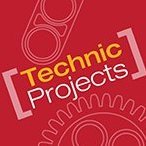
[MOC] Volvo L 350H wheel loader
mpj posted a topic in LEGO Technic, Mindstorms, Model Team and Scale Modeling
Hello! In march I completed my latest Moc, and today I took some photos. It's a wheel loader Volvo L 350H in 1.22 scale. It is an updated version of L 350G by Lego, which I used as parts pack. The bucket is in 1.22 scale, so I decided to build in this scale. I used XL motor for driving, and M motor for steering, by 2 mini LAs. Arm and bucket are controlled by L and M motors, and they have quite good movement range. Battery box and receivers are inside the bonnet. The tyres are third party, 96mm diameter. Sticker are home made! I hope you like it!- 10 replies
-
- volvo
- wheel loader
-
(and 2 more)
Tagged with:

